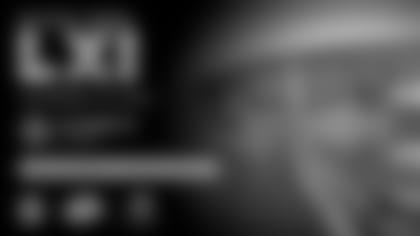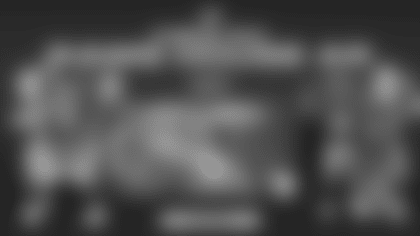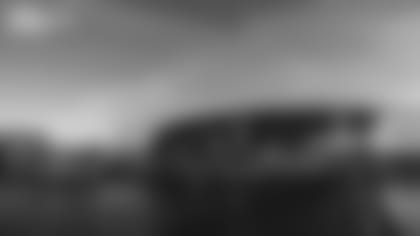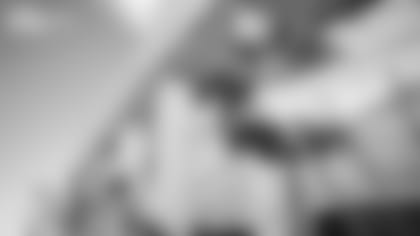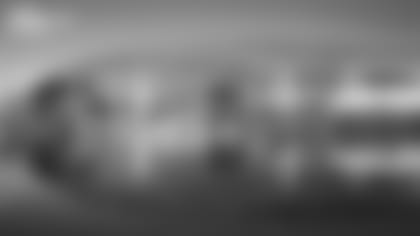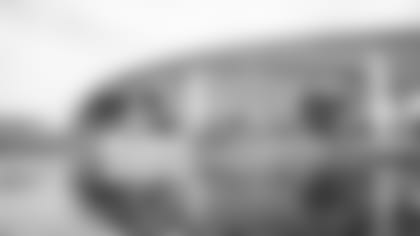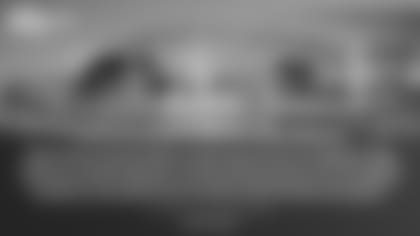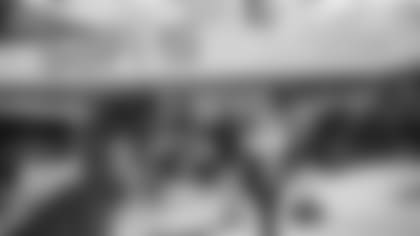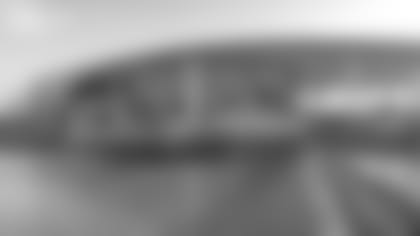INGLEWOOD, Calif. – A defining feature of SoFi Stadium, the double-sided Oculus video board will usher in a new amenity in fan experience when it rises toward the venue's transparent roof.
According to Skarpi Hedinsson, SoFi Stadium and Hollywood Park's Chief Technology Officer, it will house the first ever 4k HDR video system in a stadium.
"This is a big breakthrough," Hedinsson said during a media event held at the stadium on Jan. 22.
It's also a necessary breakthrough, too.
Rams Chief Operating Officer Kevin Demoff spoke previously about tailoring everything filling the nearly 300-acre campus to what he called the experiential economy, and there is perhaps no better way to draw fans to the stadium than a 120-yard-long video board.
The only two-sided oval center-hung video board in an NFL stadium, the Oculus is the only 4k end-to-end video production in sports. It also has the largest LED content playback system ever deployed. Every face/display can be uniquely programmed with live content, statistics or animated content. The idea of having a dual-sided display is that no matter where a fan sits in the stadium, they will have a video surface in front of them.
Hedinsson said they expect between 80 and 85 professionals creating content for the Oculus, and that undertaking itself will be different from any other professional sports team.
The Falcons have a halo-shaped video board inside Mercedes-Benz Stadium, but it only displays content on the interior of the structure.
"Nobody has ever created content for a double-circular board like this," Hedinsson said. "So the team has been in the lab for a long time, using our VR technology to understand how best to present content and how do we make sure that all the seating sections are in play as we put our images and our replay frames on the board."
Hedinsson and his team meet weekly with members of the Rams' creative team as part of developing that strategy. They'll have plenty of technology to work with along the way.
The screens collectively have 80 million pixels, and behind them sits more than 260 speakers which handle all of the audio for the entire stadium. Additionally, the structure will house 56 5G antennas.
All told, the content displayed on both sides of the Oculus aims to be better that what fans would see compared to watching the broadcast at home.
"We're trying to create a better guest experience, a better fan experience," Hedinsson said. "How do we create content? How do we give our guests the best possible show when they come to Hollywood Park? And I think that was the primary driver. But I think having a center home board, it opens up a lot of other possibilities in the building."
The Oculus currently weighs approximately one million pounds. Upon completion, it will reach 2.2 million pounds or 1,000 metric tons.
Thanks to the 43 trucks which shipped the display to the stadium, soon it will all come together to provide a groundbreaking video experience for fans.



